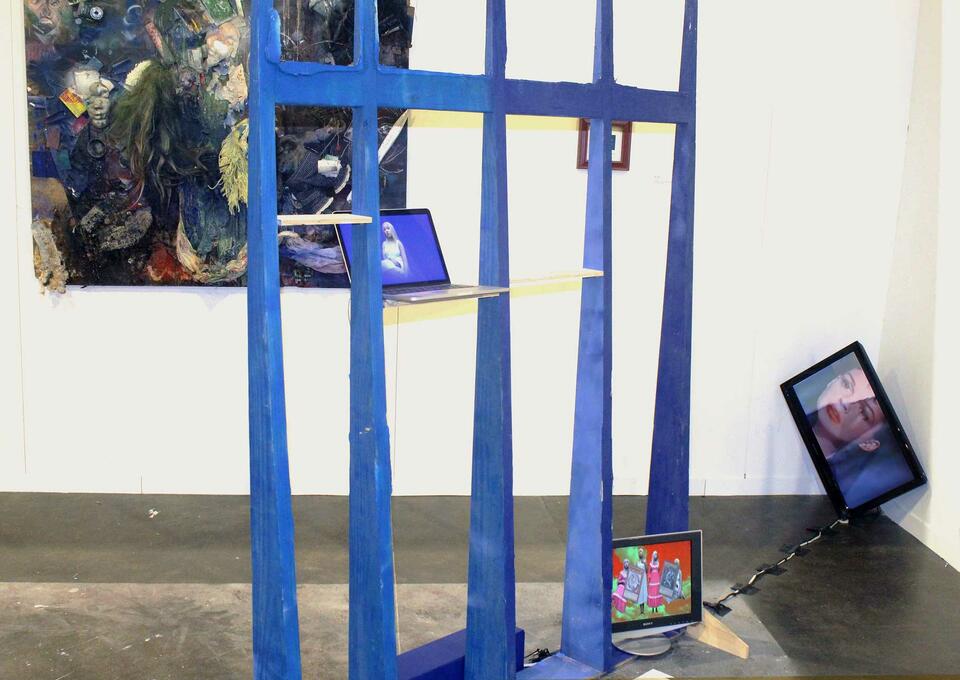Jingjing Huang
Hong Kong's Architecture Resistance:
Practice Through Research
This thesis research politically charged public spaces in Hong Kong due to the past social movements and acknowledges its uniqueness formed by the intuitive use of the vernacular public spaces in the context of both day-to-day life and social movements. The way of freely utilizing elements in public spaces makes the public space in Hong Kong a space to be, a space to express, and a space to resist. However, a unique public space like this often causes misunderstanding, misrepresentation, and sometimes fear from other sides. Thus, this thesis aims to create a subjective analytical view of the formation and usage of HK's public spaces to create a viewport into this case and hopefully inspire future strategies made in social movements.
HK is not only known for its highly dense urban development and as an economic center but in its post-colonial phase has also faced many political challenges that sparked many social movements in the past, all with engagement with the public space. However, the strategy of the movement changed during the Umbrella Movement, marking the transition into occupying movements in HK; it allowed more connections and space for the citizens to voice their citizenship due to the similarity that it provides with a typical day in HK. The Umbrella Movement not only showcases the impact of being present in space compared to past movements but also highlights and takes advantage of the characteristics of HK urban public spaces.
Image
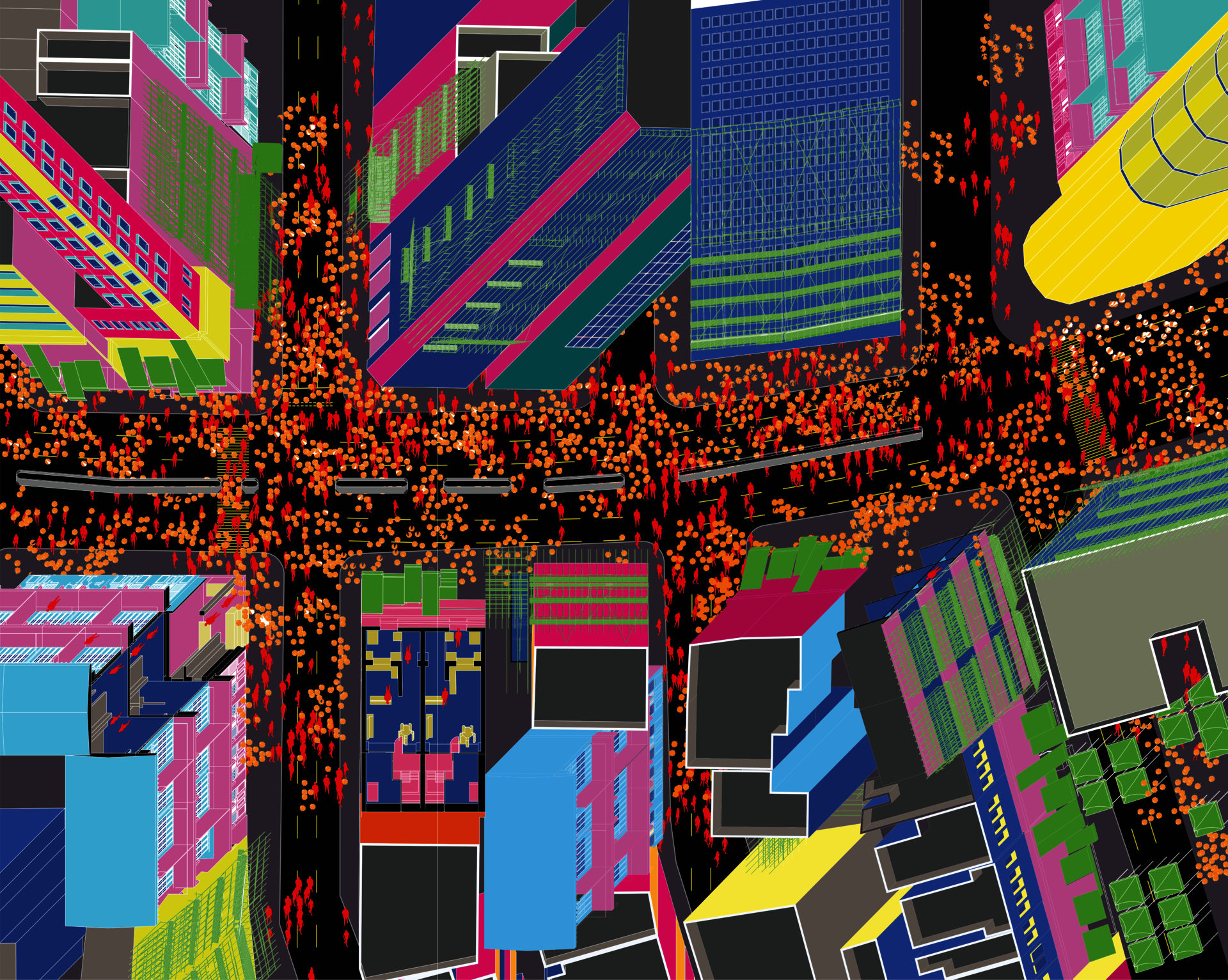
"The pro-democracy movement in post-handover Hong Kong had long been an intense struggle between the hybrid regime and pro-democracy civil society." Yuen, S., & Chung, S wrote in Explaining Localism in Post-handover Hong Kong: An Eventful Approach. Voicing pro-democracy thinking is a form of insurgent citizenship; this insurgent citizenship is based on their claims to have a right to the city and their right to the rights.
To examine the Umbrella Movement, also known as Occupy Central with Peace and Love in Hong Kong, as a critical social movement in Hong Kong history and how it has had a lasting impact until today. The movement took place from 26 September to 15 December 2014, triggered by the attempts from the mainland to reform the Hong Kong electoral system as a system with direct Mainland governance influence. The movement started with student-led occupying actions in multiple districts in Hong Kong, starting with quiet sitting sessions with no formal organization, asking for a "True Fair Free Election" (真普選). Later, the Occupy movement was joined by other citizens after students; some groups faced the police force that caused friction on a small scale with no further escalation in violence. The number of protestors peaked at more than 100,000 to occupy Central, Causeway Bay and, Mong Kok, Tsim Sha Tsui, and citizens joined and occupied the main roads, sidewalks, tram stops, and public plazas, changing the hierarchy and functions of elements in public space comparing to a typical day in Hong Kong.
Image
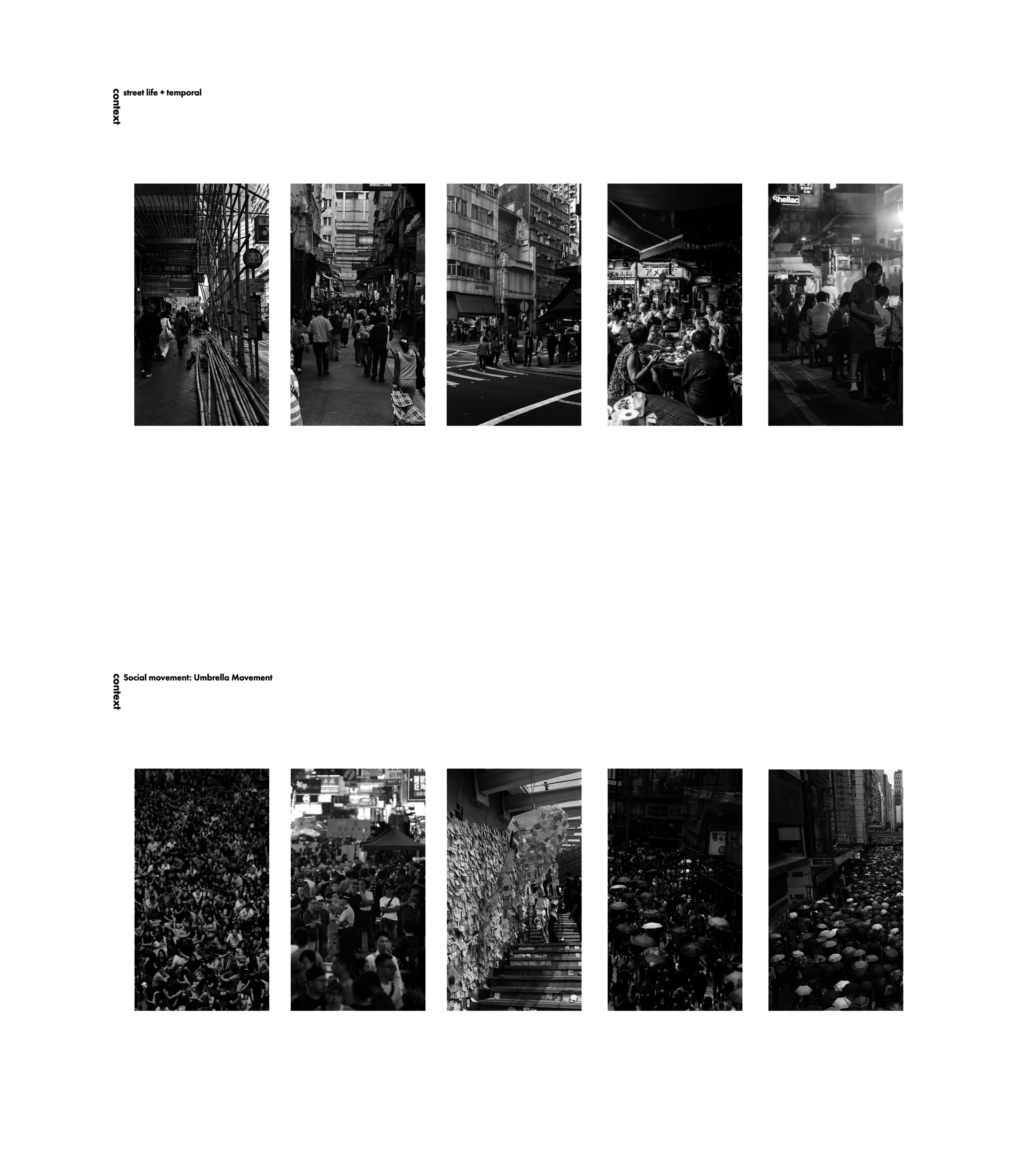
During the Occupy movement, macro events were made up of microelements, such as separate marches, speeches, and struggles with the police, which also had boundaries that marked them off while at the same time forming a part of the larger event. This restriction forced the protestors to naturally seek different opportunities to engage in the occupying movement through architectural elements around them, which provided concealment and transgression.
The Umbrella Movement was triggered by Beijing's decision on election rights in Hong Kong; this also addresses the long-rooted historical and social struggle in Hong Kong post-handover years. In line with the terms of the Joint Declaration and the subsequent Basic Law, a document based on the Joint Declaration but drawn up by China, with input from local HK participants, Hong Kong was to be a Special Administrative Region of the PRC with a high degree of autonomy and its system of gradually developing democratic government, the PRC being responsible only for defense and foreign affairs. The arrangement is due to last for 50 years. As the 50-year term is approaching halfway, the PRC is starting to implement new political measures toward Hong Kong.
As a developing democratic government, Hong Kong had many social movements in the past, as they are all considered critical moments in society; the umbrella movement is one in recent years with many aspects worth discussing in the social impact. Although Hong Kong has many social movements and public protests regarding internal conflicts, the Umbrella Movement is a turning point in reconsidering the form of protest in Hong Kong. In the past, extensive protest breakouts often ended with direct violent conflict between the police and the protestors, such as the Fish Ball Movement, the movement for street food vendors to maintain a place in future city planning. Thus, it is essential to look at the umbrella movement as a case that defines new ways of expressing a voice in the public that merges with the street-life lifestyle. This approach is not only the outcome of rethinking the previous social movement in Hong Kong, which has caused tough conflict between civilians and the police force, but also the Occupying Wall Street Movement, which inspired it.
The umbrella movement includes:
• Occupying the streets.
• Posting on public walls.
• Surfaces of public transit.
• Using presence, text, and surfaces as a temporal presence in space as a form of expression.
Image
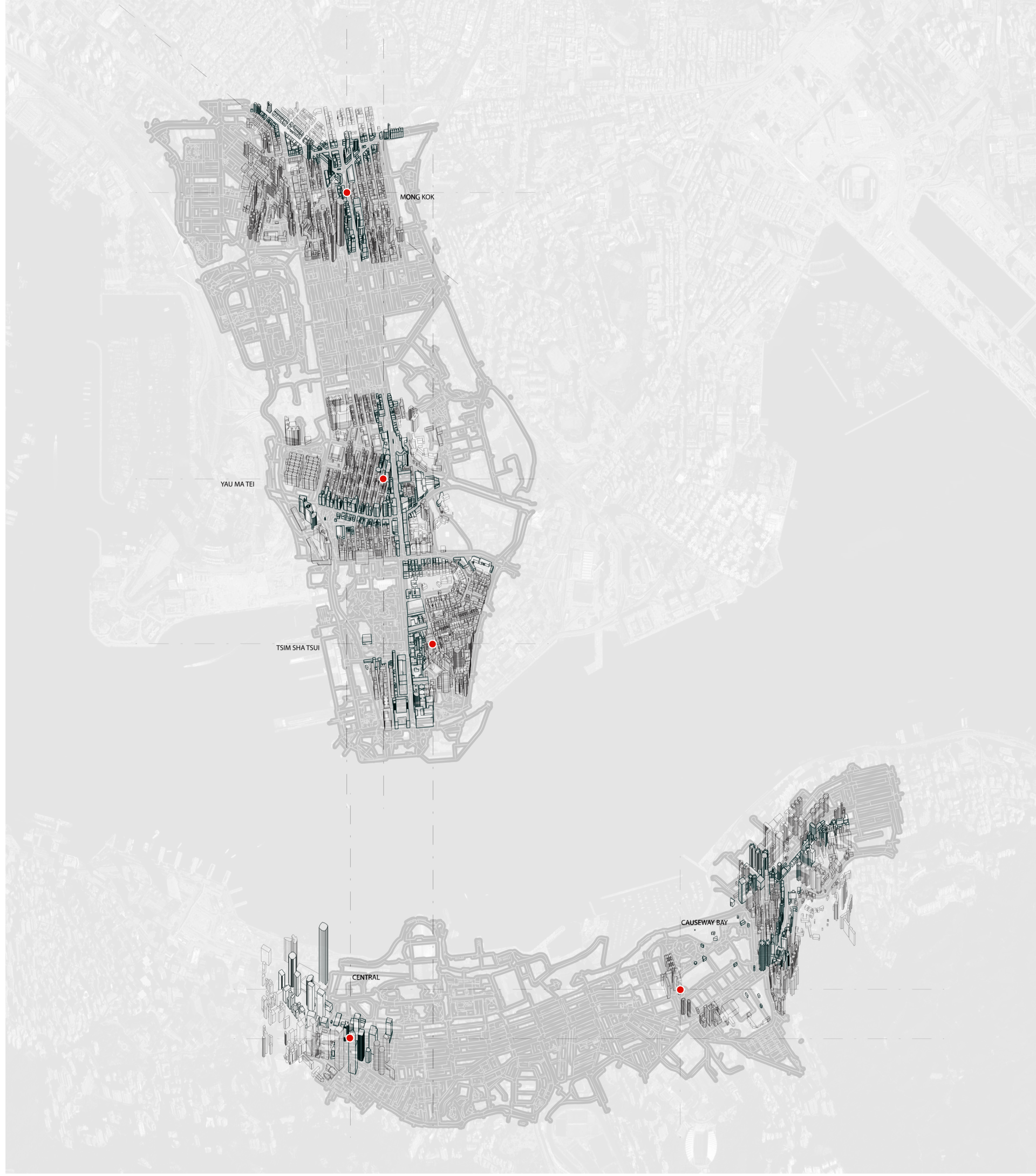
This thesis research puts the focus on the five key neighborhoods: Mong Kok, Tsim Sha Tsui, Yau Ma Tei Central, and Causeway Bay, not only because this is an important site in the umbrella movement but also due to the characteristics of those neighborhoods. They are architecturally developed by vernacular architecture typologies, providing intuitive public spaces to use in protests and making HK a unique place to voice one's citizenship.
The public realm is a space that merges social life and public living, which can result in ever-changing experiences. As illustrated in the Vernacular Architecture booklet, the public spaces are not a modern systemic architecture development but an element embedded in the HK culture. This element alone has created spaces unique to HK and can be used under different scenarios. To complete the image of the uniqueness of HK public space, the study has to include the temporal structure that is often built on top of the architecture. This type of temporal structure not only serves as a fast building structure that is locally sourced and built, but they also adopted a strategy to build in a limited space with adaptation to the vernacular building surfaces and edges.
Image
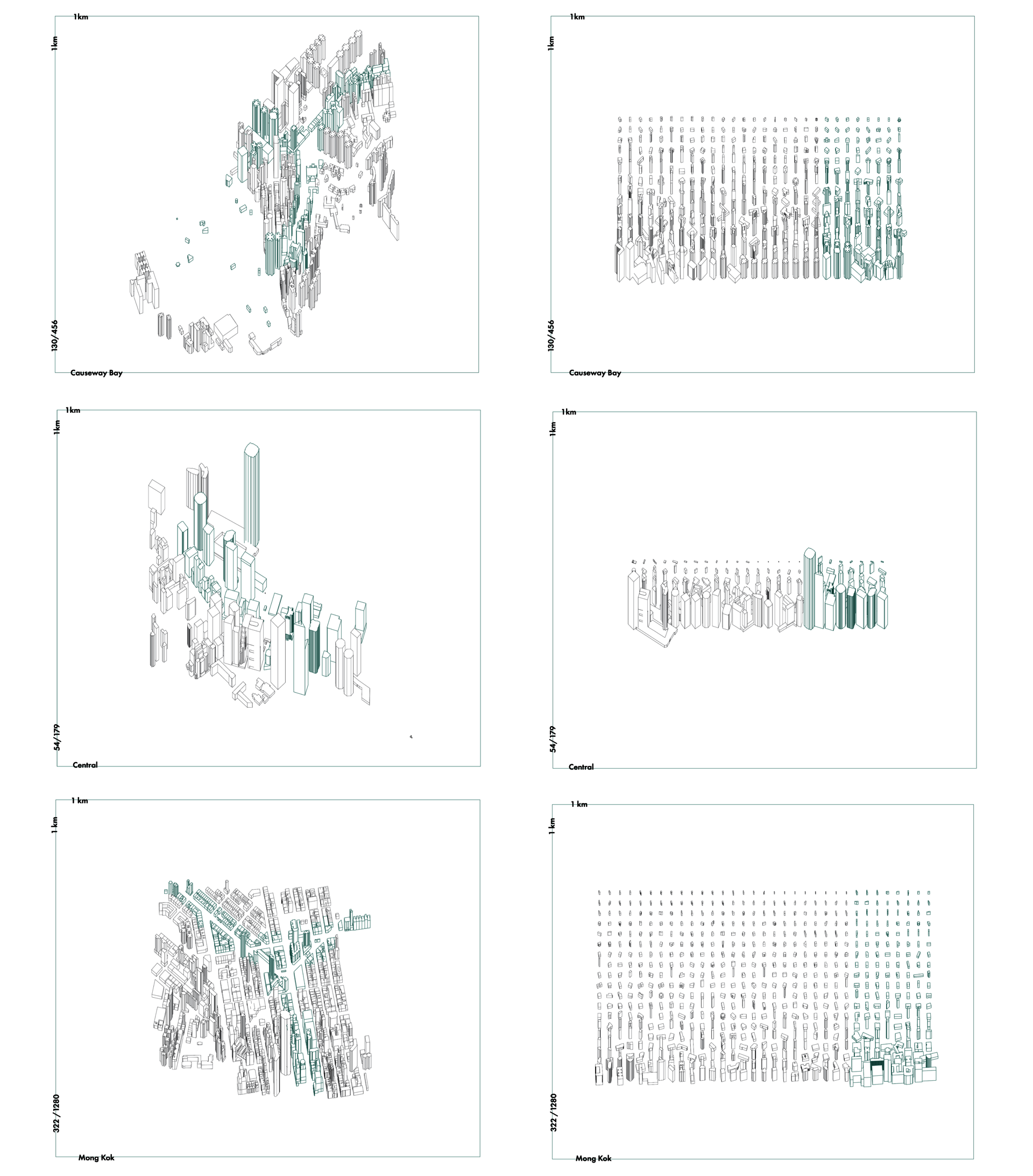
publc-private ratio of communites
Hong Kong is a city in a mountainous land by the ocean with a subtropical climate. Its architecture style was natively developed to adapt to the functions of production and protection of its residents. And more importantly building public space within it.
Image
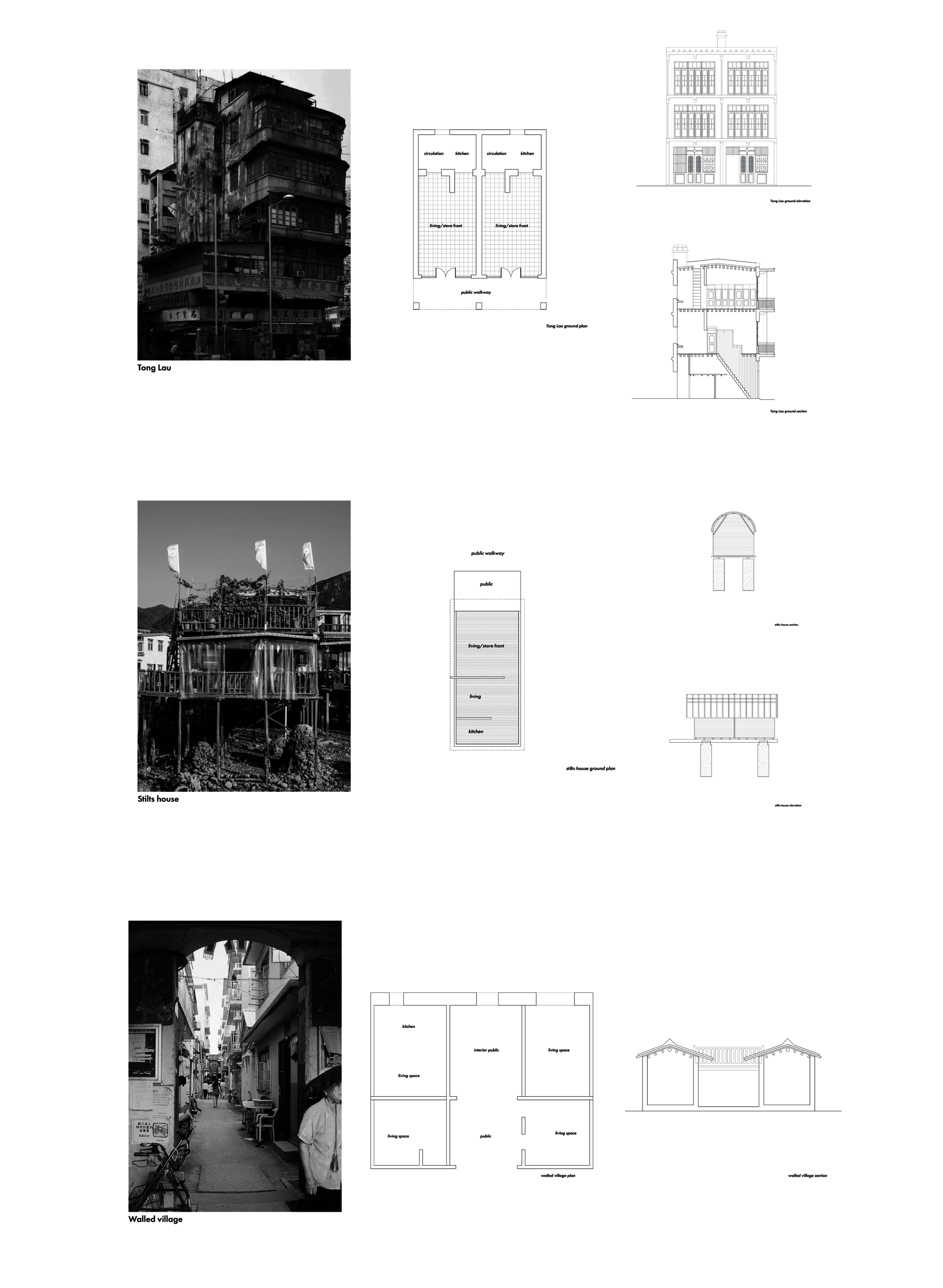
plan, section and elevation of Stilts Houses,Wall Villages and Tong Lau.
All three types of vernacular architecture show the native strategies to adapt to the geography, the climate, and the developed lifestyle in historical and modern Hong Kong. They all showcase a characteristic of the unique public space usage in Hong Kong. Firstly, it responds to the humid hot climate that forced the design to be open with large apertures to introduce natural ventilation that allows continuous connection to the outdoor space. Secondly, due to the increasing density of the population, the space in the interior realm can no longer fulfill the needs of the occupants, therefore resulting in today’s Hong Kong's unique social environment in its public space. Varies of types and scales of public social spaces are formed without the reliance on a permanent structure.
Image
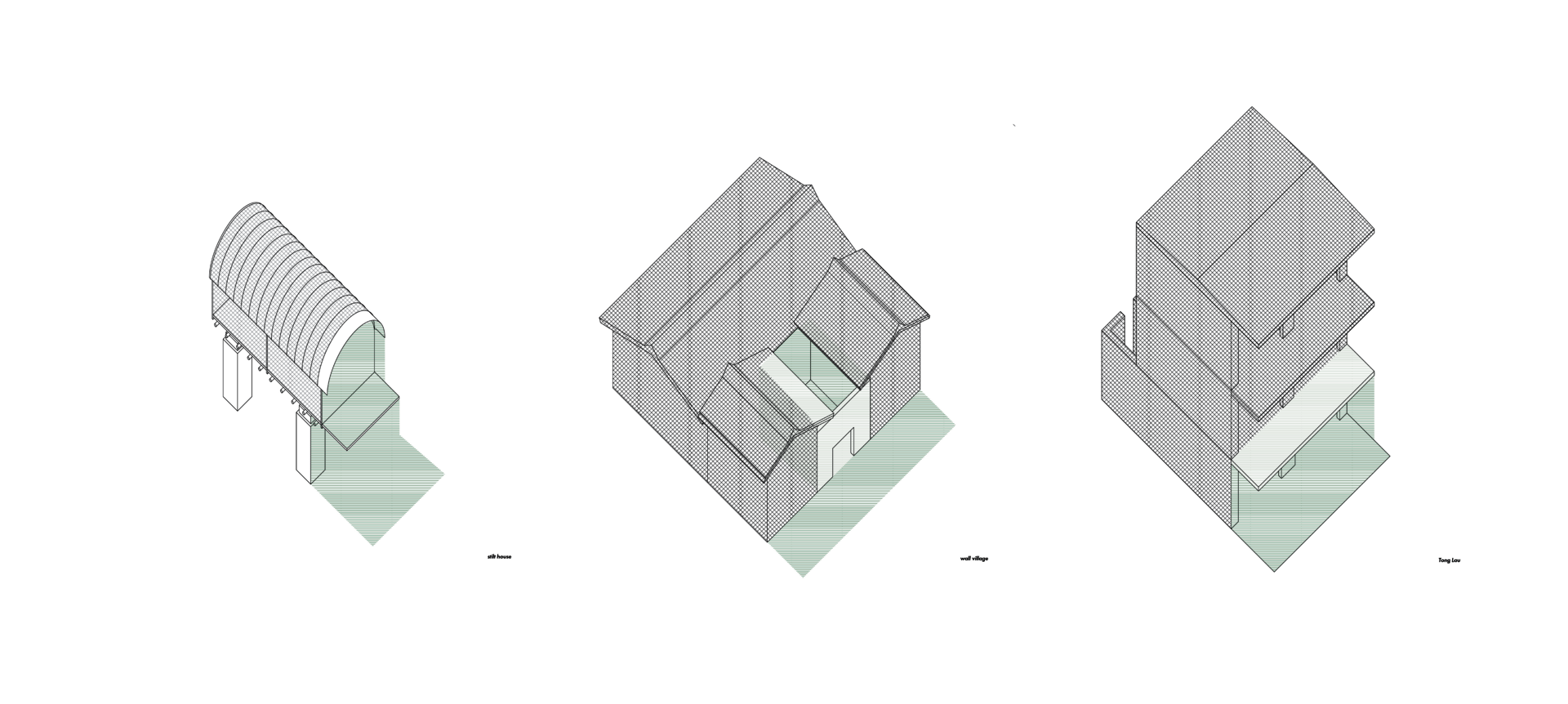
analysis of common built-in public spaces
The public realm is a space that merges social life and public living, which can result in ever-changing experiences. As illustrated in the Vernacular Architecture booklet, the public spaces are not a modern systemic architecture development but an element embedded in the HK culture. This element alone has created spaces unique to HK and can be used under different scenarios. To complete the image of the uniqueness of HK public space, the study has to include the temporal structure that is often built on top of the architecture. This type of temporal structure not only serves as a fast building structure that is locally sourced and built, but they also adopted a strategy to build in a limited space with adaptation to the vernacular building surfaces and edges.
This thesis is interested in finding how temporality in the elements can define different levels of engagement in all scenarios—taking the approach of extracting each element from its context and examining its relationship to individuals and to social groups. Looking into opportunities to use the elements as a medium to translate the temporal experience in both social life and social movements and organizing the typologies from the level of engagement to the public life.
Image
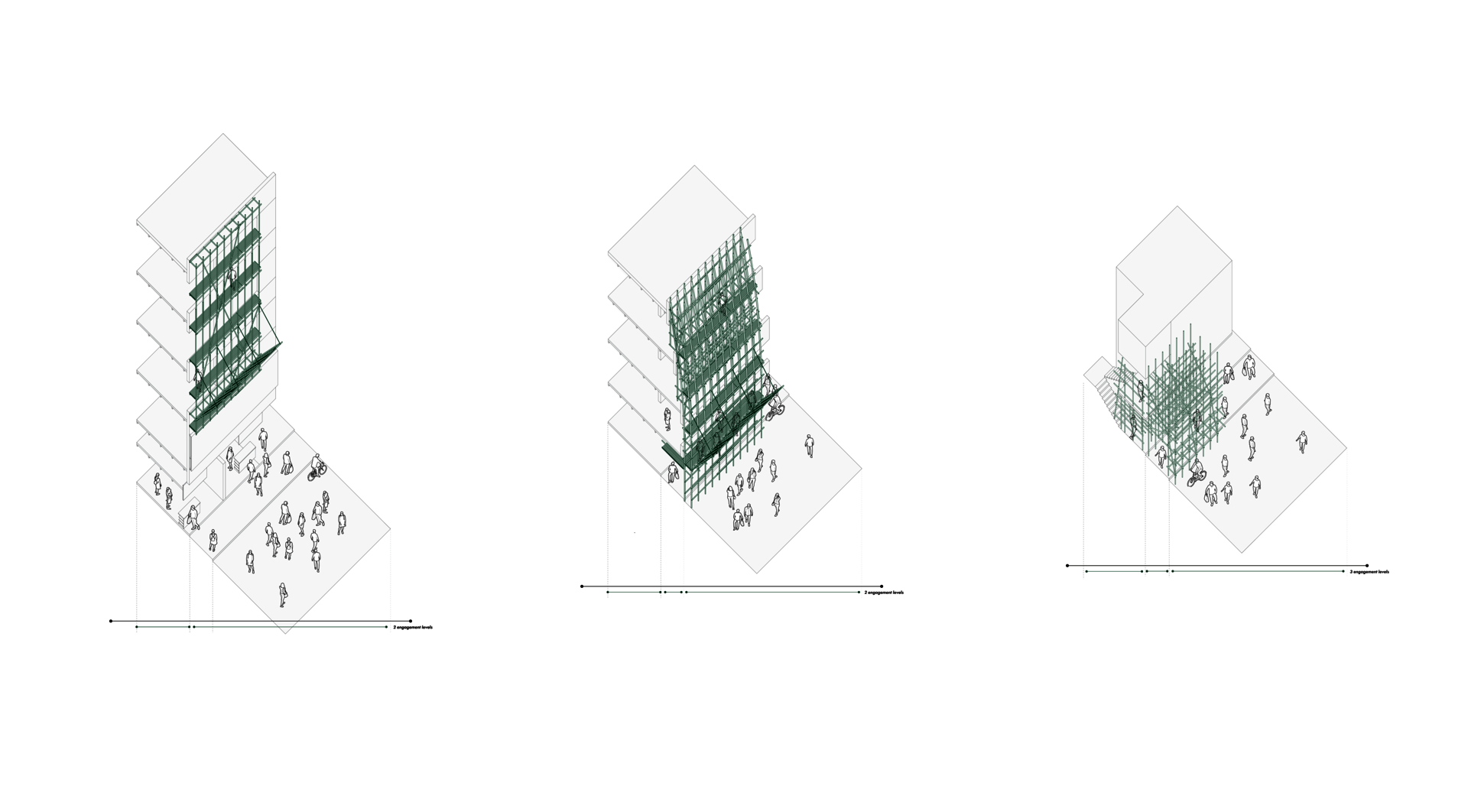
Scaffolding in Hong Kong urban spaces is a key element that marks the temporal change in the streetscape and the adaptive tool to morph and mimic the experience of the architectural element that is built on top of it. The use of scaffolding in Hong Kong is not only unique in the bamboo use that has been preserved as how it was historically performed. This method of constructing the scaffolding has adopted other kinds of small-scale public spaces, such as temporal extension of shops and temporal extension of an existing building/structure.
The umbrella (often yellow) symbolizes the umbrella movement, but due to the climate, umbrellas and tensile structures are very commonly seen in the region. The region receives heavy rainfall during the summer and a lot of sunlight with high temperatures throughout the year, so the addition and temporal structure need to accommodate the climate.
On a typical day in Hong Kong, shops and restaurants often extend their business on the sidewalk and sometimes onto the road, depending on the time of the day. During a social movement, the protestors use yellow umbrellas and tents to not only protest themselves against surveillance exposure but also to mark a sense of presence in space.
Image
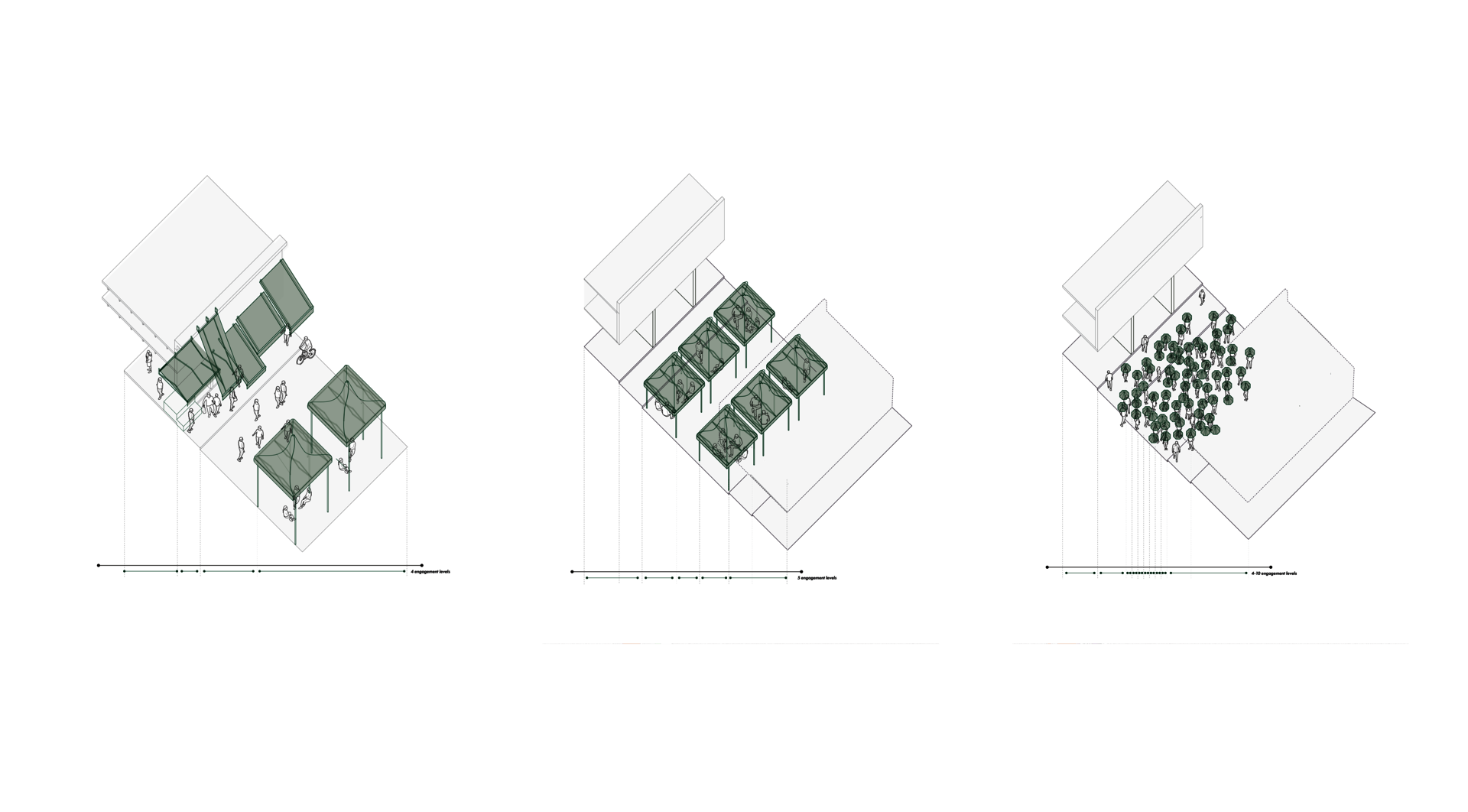
EXHIBITION IMAGES
